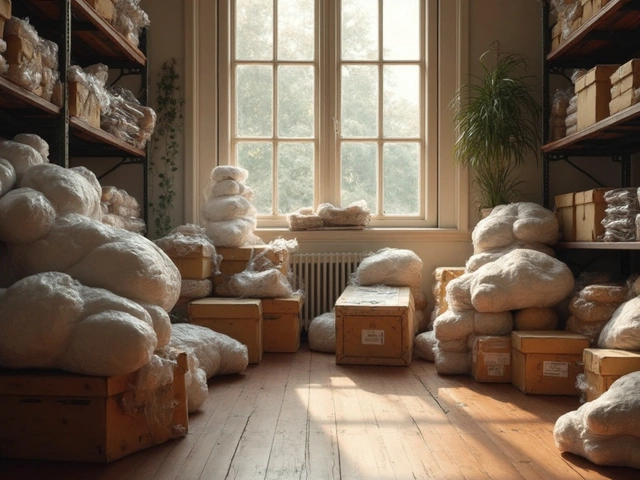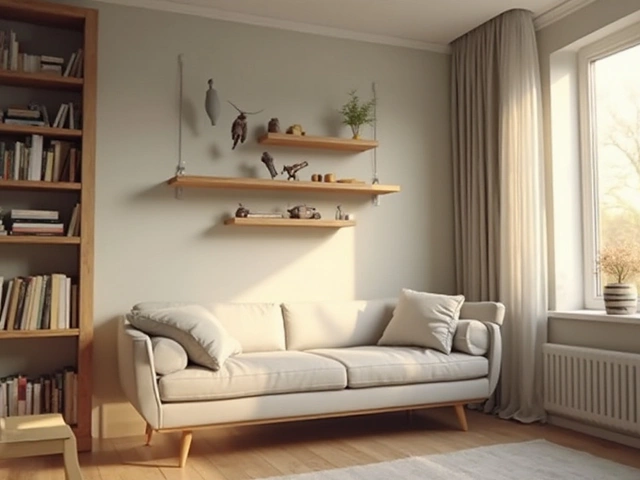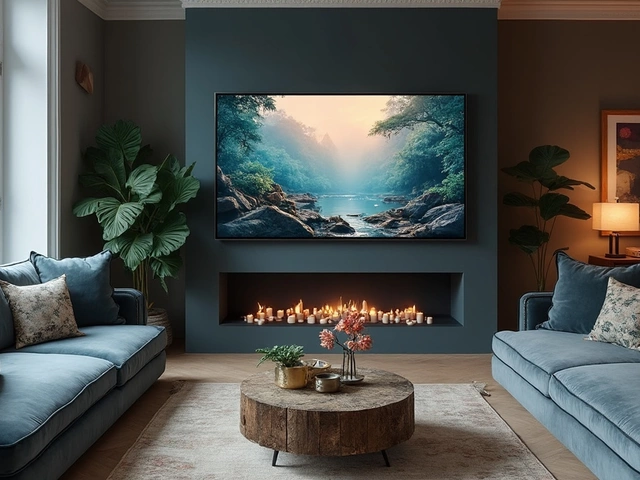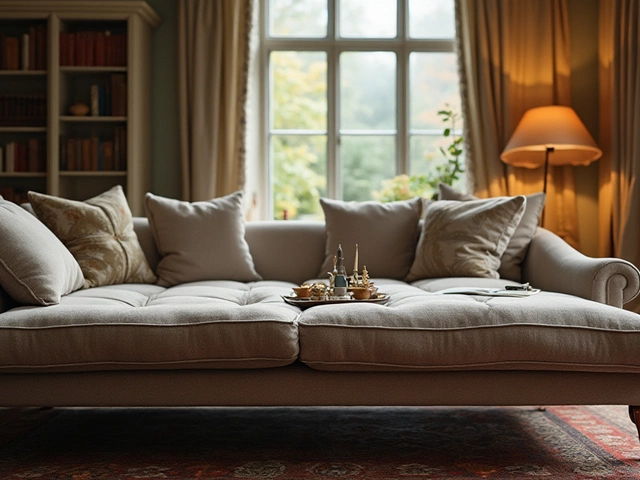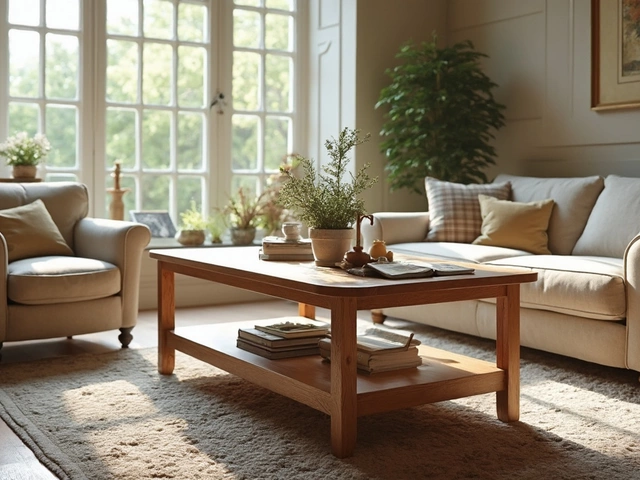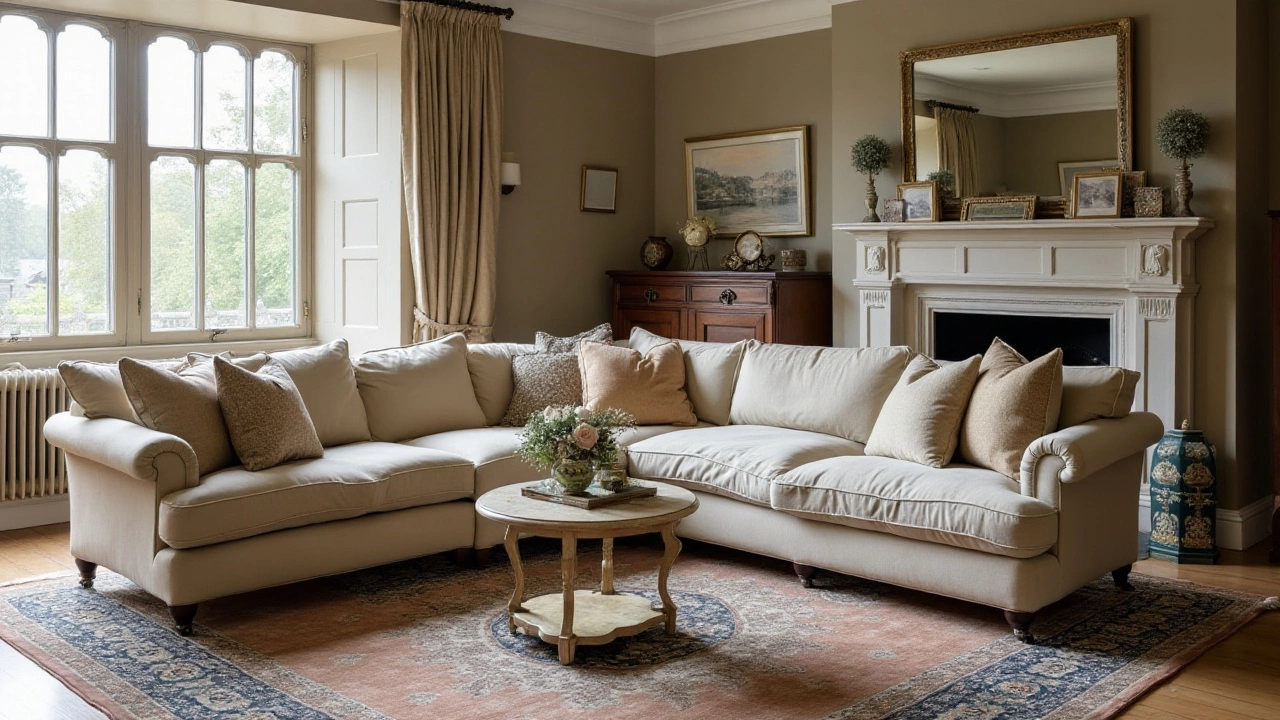 9
Jan,2025
9
Jan,2025
When it comes to revamping your living space, the corner sofa is more than just a place to sit—it's the centerpiece of your room. Picking the right color can impact how cozy and modern your home looks, setting the entire vibe for your living area. But with so many hues to choose from, where do you start?
Believe it or not, color psychology plays a significant role in how we feel about our spaces. Colors can evoke different moods, from calm and serene to lively and energetic. Once you understand this, you're one step closer to making a choice you'll love. You'll want to consider your room's size, how much sunlight streams in, and the palette you already have before landing on a decision that complements your style.
From timeless neutral shades to daring bold ones, every color scheme has its charm. It's not just about color—you might find yourself drawn to patterns and textures that catch your eye and add character to your living room. Let's dive into how you can choose a sofa color that not only suits your taste but also makes the space truly yours.
- Understanding Color Psychology
- Assessing Room Dynamics
- Considering Existing Decor
- Trending Colors and Styles
Understanding Color Psychology
When it comes to picking the ideal hue for your corner sofas, color psychology is a compelling factor that shouldn't be understated. The colors within your home can significantly alter your emotions and the way you feel about a space. Across the spectrum, colors evoke varying responses; for instance, blues are often linked to calmness and serenity, making them an excellent choice for anyone looking to create a peaceful retreat in their living room. In contrast, reds can energize and stimulate, which might be perfect if you desire a lively, dynamic social area. And then there are earthy tones, browns, and greens, which connect you to nature, offering a grounding and warm atmosphere that feels inviting.
Color in itself is not just a matter of preference but impacts your everyday living. According to a study led by psychologists at the University of Texas, certain hues can influence productivity and mood. For instance, the study suggests, "Blue walls often led to higher productivity levels." Having this knowledge allows you to be strategic in selecting the best color for your living room decor. If you're hoping for a room that relaxes, colors like muted greens, cool grays, or soft blues might be just what you need. These colors can have effects similar to meditation, bringing a sense of balance and restful ambiance.
Color Choices and Perceptions
While pondering over the perfect color, consider how you and your family interpret colors, since experiences and cultures can shape perceptions. Warm colors like orange and yellow are seen as cheerful and energetic, often perfect for family spaces where laughter and activity abound. Yellow commands attention and can make a smaller room appear larger due to its reflective qualities. Opting for something in the warm palette may boost everyday happiness. On the other hand, if you favor neutrals such as beige or ivory for your sofa colors, they provide a canvas-like versatility, allowing for seasonal decor swaps or accent color changes without additional stress. These colors are often associated with simplicity and elegance, offering a classic look that doesn’t impose.
Also of interest, data collected in recent years suggests that earth tones have become increasingly popular, with over 35% of homeowners now opting for these in their living spaces, as reflected in a survey by Home Decor Weekly. This trend toward natural aesthetics might be tied to a growing desire for sustainability and eco-friendliness, mirroring the greenery and open spaces we're deprived of in densely populated urban environments.
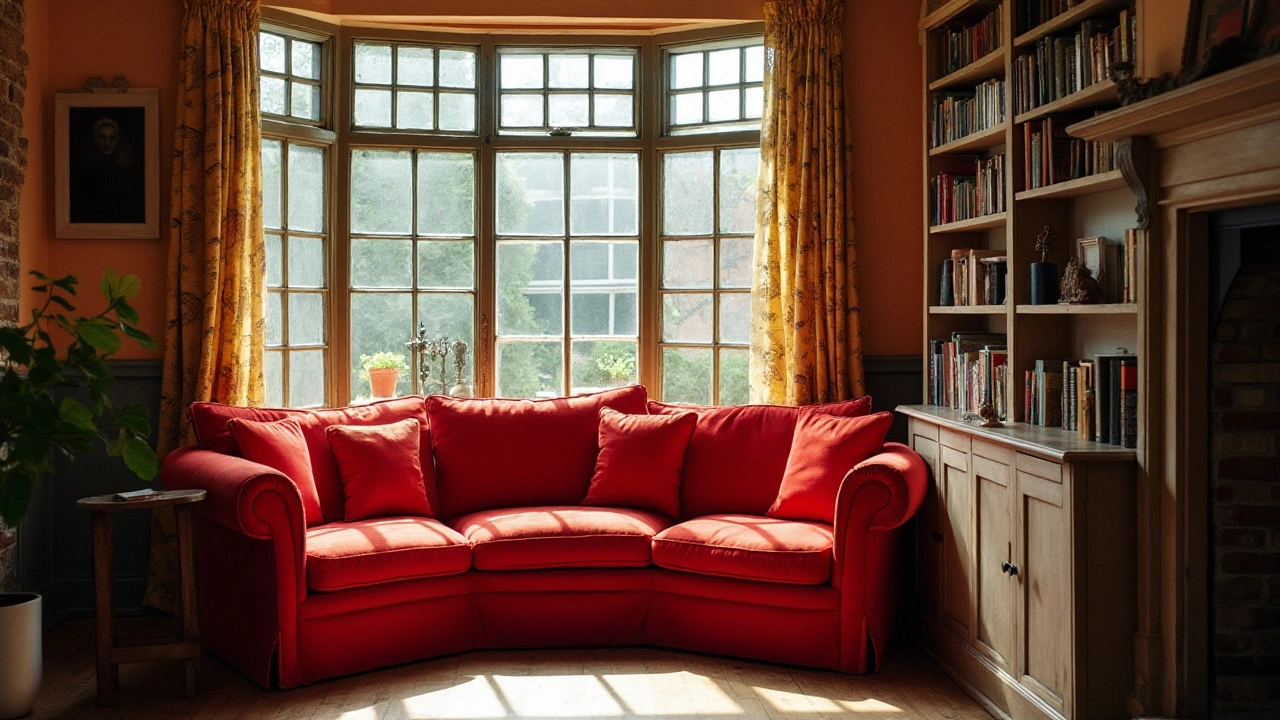
Assessing Room Dynamics
When you're thinking about the perfect corner sofa color, it's crucial to reflect on your room's unique dynamics. The size and shape of your living room, along with its natural light, play a pivotal role in your choice. Rooms that are small and cozy often benefit greatly from lighter shades. These colors reflect light, giving an illusion of space by brightening up the room. By contrast, larger, more open spaces can handle darker or bolder colors without feeling cramped or overwhelming.
One needs to also consider how the sofa's orientation will interact with windows and doors. A well-placed, correctly colored corner sofa can direct the flow of traffic and focus of activity in the living area, acting as a subtle boundary that doesn’t require walls. For example, if a sofa is placed opposite a large window, consider a color that won't get washed out by direct sunlight. Moreover, it’s useful to think about how different shades will appear in the various lighting throughout the day.
Let’s not forget the architectural features in your living room. If your space boasts unique elements like exposed brick walls or ornate ceilings, your sofa color should harmonize with these characteristics. More neutral hues like grays and beiges frequently pair well with these features, imparting a modern and cohesive look. On the other hand, a pop of color like a deep emerald or rich maroon can serve as a striking centerpiece, making your sofa a piece of art in its own right.
Working with Existing Fixtures
It's easy to get swept up in the idea of something new, but when incorporating a corner sofa into your living room, it's vital to consider the existing aspects of your home. Pay attention to flooring, wall color, and other furnishings. Your new addition should tie these components together rather than clash or stand alone. This is an opportunity to either blend in seamlessly or purposefully stand out; both can be achieved depending on your desired aesthetic.
"A considered palette that nods to your home’s past can yield a timeless quality," suggests interior designer Nate Berkus. "It’s about creating spaces that feel like they've evolved over time."
Beyond the tangible, one must acknowledge the atmosphere your color choice contributes to. Homes with an organic, earthy vibe might call for soft greens or warm browns. Meanwhile, a contemporary or industrial space can embrace cooler tones like slate blue or even a daring charcoal. As you assess your room, consider both the functional and emotional impact of the sofa color you select. In short, scrutinizing room dynamics isn’t just about dimensionality and light—it's about capturing and enhancing your room's essence.
By understanding these dynamics, you ensure a more comprehensive approach. The result is a living room that feels thoughtfully designed, bringing harmony through dimensions, light, and mood—the trifecta of effective interior styling.
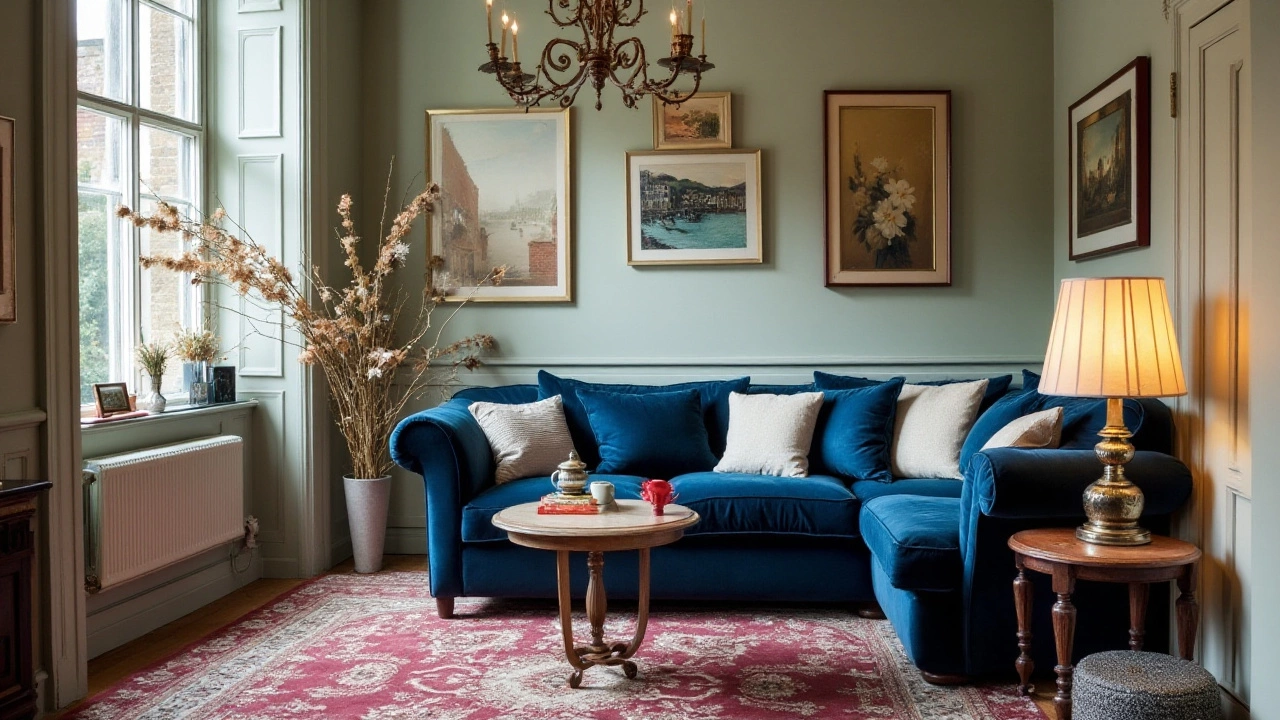
Considering Existing Decor
It's tempting to fall in love with a bold-colored corner sofa that stands out on the showroom floor. However, what looks fantastic in a showroom might not always translate seamlessly into your home. It's essential to assess your existing decor to ensure your new sofa will harmonize with the space. Your living room likely already has a color palette, intentional or not, and acknowledging it is the first step. Look around—what colors are predominant? Are there wood tones, vibrant artwork, or patterned rugs? Each element contributes to the design narrative of your room.
Your corner sofa should ideally complement these existing elements rather than clash with them. For instance, if your space is filled with earthy tones, a sofa in muted greens or browns might naturally integrate into the room's atmosphere. On the other hand, if you favor a minimalistic style characterized by neutral whites and grays, a corner sofa in a soft cream or even a striking black can provide depth without overwhelming the simplicity. Contrasts can work, too, if done thoughtfully. A bright-colored sofa set against a neutral room backdrop can serve as a focal point, drawing eyes to the elegance of its design without overshadowing other pieces.
Matching or strategically contrasting the color of your furniture with wall colors and decorative elements is not just a matter of aesthetics, but a harmonious way to instill balance. In the words of interior design expert Nate Berkus,
"Your home should tell the story of who you are, and be a collection of what you love."This sentiment rings true when considering how your sofa color can reflect your personality while aligning with existing decor pieces.
To further illustrate, let's say you have a room that plays with natural light through large windows. Consider a color that comes alive in both daylight and artificial lighting. For spaces that lack significant architectural interest, such as a standout mantelpiece or a grand light fixture, a boldly colored sofa could act as the primary feature. If you enjoy rearranging decor elements often, opting for a versatile color might serve you well, as it can adapt to new styles and trends with ease. This approach grants longevity and variety to your styling options without the need for drastic exchanges.
An interesting way to visualize how a new sofa color will fit into your existing setting is by using paper or fabric swatches. Hold these up against your walls, floors, and other furniture to see the interactions. This practice will not only guide you in determining the best shade but will also reveal underlying tones in your furnishings you may not have noticed before. It's akin to a dress rehearsal before the big debut, ensuring no aspect is left unchecked.
While you navigate through options, it's also essential to think about the texture and style of both your existing decor and the new corner sofa. Sometimes, a monochrome approach with varying textures brings a sophisticated and modern touch to a room. Mixing leather with plush fabrics, or pairing sleek metals with soft cushions, can add layers that excite the tactile senses. The key is to ensure that any new piece feels like a natural extension rather than an unscripted guest at the party. So go ahead, take time to evaluate your living room’s story as it stands and make your corner sofa choice a character that enriches it.
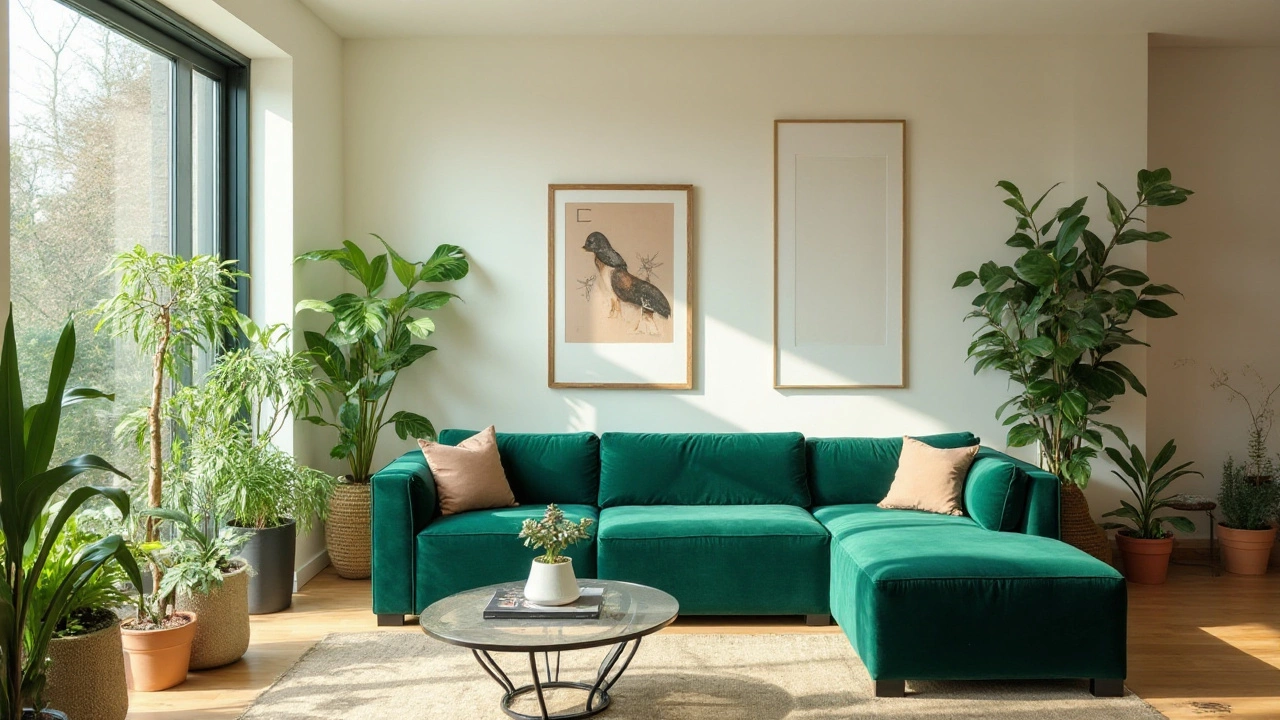
Trending Colors and Styles
In recent years, the world of interior design has seen a fascinating shift in the palette of colors for corner sofas. If you're looking to refresh your living room's look, understanding these trending shades can help you pick a color that is both stylish and forward-thinking. This season, earthy tones such as terracotta, olive green, and warm browns are making a comeback. They offer a grounded, natural feeling which pairs excellently with a variety of textures and patterns, seamlessly fitting into modern naturalistic and rustic design themes.
An intriguing aspect of current trends is the revival of jewel tones - think deep blues, emerald greens, and rich purples. These bold hues add a touch of sophistication and easily transform your sofa into a centerpiece. A corner sofa in a jewel tone can be paired with metallic accessories like brass or gold to create a luxe atmosphere. When speaking about these bold color choices, interior designer Sarah Richardson suggests, "Incorporating vibrant colors in large furniture pieces like sofas can anchor the room and set the mood while allowing other decor elements to enhance the space."
Aside from colors, styles are equally important in making your living room aesthetically pleasing. Mid-century modern styles with their clean lines and tapered legs remain popular, offering a timeless appeal that's easy to rejuvenate with colorful cushions or cozy throws. On the flip side, modular and sectional sofas provide flexibility, allowing customization for both small and larger spaces, which is particularly appealing for city dwellers looking to maximize comfort and utility.
While traditional palettes haven't completely vanished, today's homeowners are more willing to experiment, mixing both contemporary colors with classic styles. Blending styles like industrial chic with softer hues can create a harmonious contrast, inviting both comfort and edge to your living space. Also, don't overlook patterns and materials. Leather and velvet have found resurgence as people seek tactile storytelling in their homes, craving depth that isn't confined to color alone.
Understanding the popularity behind these vibrant selections and timeless styles is key, especially when you consider investing in a corner sofa. By aligning your choice with current trends, you ensure that it not only resonates with your personal style but elevates the overall charm of your living room. Ultimately, it's about balance—choosing a sofa that fits effortlessly within your lifestyle, while keeping an eye on modern elegance.
